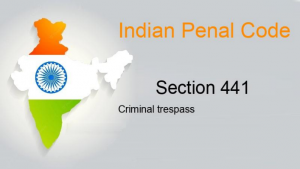Trespassing is not merely a nuisance; it is a violation of personal and property rights that can have serious legal consequences. In India, with land disputes and property encroachments on the rise, understanding trespassing laws has become more crucial than ever—whether you’re a homeowner, a tenant, a landowner, or a security professional. As per the Indian Penal Code and other civil statutes, trespassing is legally punishable and involves defined legal steps for recourse.
In this comprehensive blog, we will explore everything you need to know about trespassing laws in India as of 2025—including where and how to place “No Trespassing” signs, legal definitions, IPC sections, removal procedures, punishment details, and court practices. Whether you want to secure your residential land, a commercial plot, or farmland, this blog will walk you through the legal framework designed to protect your property rights.
Also Read:- What are the New Construction Rules in Maharashtra?
What is Trespassing on Private Property? Legal Definitions Explained

Trespassing, in the context of Indian law, refers to unauthorized entry into a property without the permission of the rightful owner or occupant. The act becomes criminal when it involves intent to intimidate, insult, or annoy the possessor or to commit an offense.
Legally, trespassing can be classified into two broad categories: civil and criminal trespass. While civil trespass typically involves a minor violation, such as walking across someone’s land, criminal trespass under the Indian Penal Code (IPC) can result in serious consequences.
What is Section 441 of the Indian Penal Code on Trespass?

Section 441 of the IPC defines criminal trespass as the unlawful entry into a property with the intent to commit an offense or to intimidate, insult, or annoy the person in possession. It also includes unlawfully remaining on the property after lawful entry if the intent changes to any of the above.
This section forms the foundation of all legal interpretations of trespassing under Indian law and is the cornerstone for criminal proceedings in such cases.
Also Read:- Penalty for Building House on Agricultural Land in Maharashtra
What is the Punishment for Trespassing in India? (IPC Explained)

According to Section 447 of the IPC, the punishment for criminal trespass is imprisonment for up to three months, a fine up to ₹500, or both. However, this punishment can escalate if the trespassing is accompanied by violence, destruction, or intent to commit a serious crime.
For example, house-trespass (Section 448 IPC) or lurking house-trespass by night (Section 456 IPC) can attract higher penalties, including extended jail terms and higher fines, depending on the severity of the crime.
What is the Maximum Penalty for Trespass under Indian Law?

While simple trespass may invite minor penalties, aggravated forms—such as house-breaking after sunset, armed trespass, or trespassing with the intent to commit rape or murder—can lead to imprisonment ranging from 7 years to life. These fall under more serious provisions like Sections 449, 450, 457, and others.
The worst punishments for trespassing in India are reserved for cases where the act is part of a more serious or violent crime.
Also Read:- Farmhouse vs Plot: Which is a Better Investment for the Future?
What is the Imprisonment Term for Trespassing in India?

For basic criminal trespass under Section 447, the imprisonment term is up to 3 months. For house-trespass, the term extends to 1 year. However, certain types of trespass involving armed entry, forceful break-ins, or nighttime entry can lead to imprisonment for up to 10 years, depending on the applicable section.
What are the Worst Punishments for Trespassing in India?
The gravest forms of trespassing—especially those involving criminal intent, violence, or repeat offenses—can lead to severe punishments such as a 10-year jail term, hefty fines, and civil suits for damages. Trespassing related to dacoity, gang activity, or sexual crimes can be treated as non-bailable offenses.
Such cases are often fast-tracked due to their impact on victims’ safety and rights over property.
Can I Tell Someone to Get Off My Property? Legal Rights and Process

Yes, Indian law allows you to verbally ask a person to leave your property if they do not have legal rights to be there. If they refuse, you can call the police and register a complaint for criminal trespass under Section 447 IPC.
Additionally, you are entitled to issue a legal notice and follow up with a court-ordered eviction if the intruder refuses to vacate.
Also Read:- How to Identify Good Construction Quality in Real Estate
How to Remove Trespassers from Your Property in India: Legal Steps
Removing a trespasser involves several steps:
- Verbal Request: Ask the person to vacate.
- Police Complaint: File an FIR under relevant IPC sections.
- Legal Notice: Serve a formal legal notice via an advocate.
- Civil Suit: Initiate eviction proceedings in a civil court.
- Court Order Execution: With a court order, authorities can use force to remove the intruder.
Taking a documented and legal approach strengthens your position if the matter escalates.
How to Prove Criminal Trespass in Indian Courts
To prove criminal trespass, you must provide:
- Evidence of Ownership or Possession
- Proof of Unauthorized Entry
- Intent (Annoyance, Harm, or Crime)
Witnesses, CCTV footage, photographs, and police reports strengthen your claim. Indian courts require a clear demonstration of both physical entry and malicious intent for conviction.
Also Read:- Pre-EMI vs Full EMI: Get the Right Financing for Your Dream Home
What are the Three Types of Trespass to a Person?

Trespass is not limited to land—it includes personal violations as well. The three types are:
- Trespass to Person: Assault, battery, or false imprisonment.
- Trespass to Goods: Unlawful interference with movable property.
- Trespass to Land: Unauthorized entry into someone’s property.
Each has different legal implications and penalties under Indian civil and criminal law.
Rules and Best Practices for Posting No Trespassing Signs
- Use Clear Language: Avoid vague words. “No Trespassing. Private Property. Offenders Will Be Prosecuted” is ideal.
- Use Durable Material: Use weather-proof boards with bold letters.
- Ensure Visibility: Keep signs readable from a distance.
- Document Placement: Take photos or videos for proof in court.
These best practices strengthen your legal case against intruders.
Where to Place No Trespassing Signs on Property in India

Strategic placement is key:
- At All Entry Points: Gates, fences, and driveways.
- At Intervals on Larger Properties: Every 50–100 meters.
- Near Vulnerable Spots: Back entrances or open boundaries.
- At Corners of the Plot: To clearly define perimeters.
Proper signage strengthens your claim that the trespasser had full notice.
Conclusion: Protect Your Space, Protect Your Rights
In a country like India, where land and property rights are often at the heart of disputes, knowing and enforcing trespassing laws is your first line of defense. Whether you’re dealing with rural farmland, residential plots, or commercial spaces, understanding the law gives you power—not just to act, but to prevent. From using “No Trespassing” signs correctly to filing legal complaints and court petitions, the system offers robust tools if you’re aware of how to use them.
Housiey, India’s first buyer-centric real estate platform, emphasizes the importance of legal clarity while buying or owning property. Just like we simplify your home-buying journey, we also believe you should be informed about how to legally protect your hard-earned investment.
For those planning construction, boundary fencing, or redevelopment, don’t forget to check out our other detailed blog on Construction Rules in Maharashtra for complete insights.
FAQs
Trespassing is not merely a nuisance; it is a violation of personal and property rights that can have serious legal consequences. In India, with land disputes and property encroachments on the rise, understanding trespassing laws has become more crucial than ever—whether you’re a homeowner, a tenant, a landowner, or a security professional. As per the Indian Penal Code and other civil statutes, trespassing is legally punishable and involves defined legal steps for recourse.
In this comprehensive blog, we will explore everything you need to know about trespassing laws in India as of 2025—including where and how to place “No Trespassing” signs, legal definitions, IPC sections, removal procedures, punishment details, and court practices. Whether you want to secure your residential land, a commercial plot, or farmland, this blog will walk you through the legal framework designed to protect your property rights.
Also Read:- What are the New Construction Rules in Maharashtra?
What is Trespassing on Private Property? Legal Definitions Explained

Trespassing, in the context of Indian law, refers to unauthorized entry into a property without the permission of the rightful owner or occupant. The act becomes criminal when it involves intent to intimidate, insult, or annoy the possessor or to commit an offense.
Legally, trespassing can be classified into two broad categories: civil and criminal trespass. While civil trespass typically involves a minor violation, such as walking across someone’s land, criminal trespass under the Indian Penal Code (IPC) can result in serious consequences.
What is Section 441 of the Indian Penal Code on Trespass?

Section 441 of the IPC defines criminal trespass as the unlawful entry into a property with the intent to commit an offense or to intimidate, insult, or annoy the person in possession. It also includes unlawfully remaining on the property after lawful entry if the intent changes to any of the above.
This section forms the foundation of all legal interpretations of trespassing under Indian law and is the cornerstone for criminal proceedings in such cases.
Also Read:- Penalty for Building House on Agricultural Land in Maharashtra
What is the Punishment for Trespassing in India? (IPC Explained)

According to Section 447 of the IPC, the punishment for criminal trespass is imprisonment for up to three months, a fine up to ₹500, or both. However, this punishment can escalate if the trespassing is accompanied by violence, destruction, or intent to commit a serious crime.
For example, house-trespass (Section 448 IPC) or lurking house-trespass by night (Section 456 IPC) can attract higher penalties, including extended jail terms and higher fines, depending on the severity of the crime.
What is the Maximum Penalty for Trespass under Indian Law?

While simple trespass may invite minor penalties, aggravated forms—such as house-breaking after sunset, armed trespass, or trespassing with the intent to commit rape or murder—can lead to imprisonment ranging from 7 years to life. These fall under more serious provisions like Sections 449, 450, 457, and others.
The worst punishments for trespassing in India are reserved for cases where the act is part of a more serious or violent crime.
Also Read:- Farmhouse vs Plot: Which is a Better Investment for the Future?
What is the Imprisonment Term for Trespassing in India?

For basic criminal trespass under Section 447, the imprisonment term is up to 3 months. For house-trespass, the term extends to 1 year. However, certain types of trespass involving armed entry, forceful break-ins, or nighttime entry can lead to imprisonment for up to 10 years, depending on the applicable section.
What are the Worst Punishments for Trespassing in India?
The gravest forms of trespassing—especially those involving criminal intent, violence, or repeat offenses—can lead to severe punishments such as a 10-year jail term, hefty fines, and civil suits for damages. Trespassing related to dacoity, gang activity, or sexual crimes can be treated as non-bailable offenses.
Such cases are often fast-tracked due to their impact on victims’ safety and rights over property.
Can I Tell Someone to Get Off My Property? Legal Rights and Process

Yes, Indian law allows you to verbally ask a person to leave your property if they do not have legal rights to be there. If they refuse, you can call the police and register a complaint for criminal trespass under Section 447 IPC.
Additionally, you are entitled to issue a legal notice and follow up with a court-ordered eviction if the intruder refuses to vacate.
Also Read:- How to Identify Good Construction Quality in Real Estate
How to Remove Trespassers from Your Property in India: Legal Steps
Removing a trespasser involves several steps:
- Verbal Request: Ask the person to vacate.
- Police Complaint: File an FIR under relevant IPC sections.
- Legal Notice: Serve a formal legal notice via an advocate.
- Civil Suit: Initiate eviction proceedings in a civil court.
- Court Order Execution: With a court order, authorities can use force to remove the intruder.
Taking a documented and legal approach strengthens your position if the matter escalates.
How to Prove Criminal Trespass in Indian Courts
To prove criminal trespass, you must provide:
- Evidence of Ownership or Possession
- Proof of Unauthorized Entry
- Intent (Annoyance, Harm, or Crime)
Witnesses, CCTV footage, photographs, and police reports strengthen your claim. Indian courts require a clear demonstration of both physical entry and malicious intent for conviction.
Also Read:- Pre-EMI vs Full EMI: Get the Right Financing for Your Dream Home
What are the Three Types of Trespass to a Person?

Trespass is not limited to land—it includes personal violations as well. The three types are:
- Trespass to Person: Assault, battery, or false imprisonment.
- Trespass to Goods: Unlawful interference with movable property.
- Trespass to Land: Unauthorized entry into someone’s property.
Each has different legal implications and penalties under Indian civil and criminal law.
Rules and Best Practices for Posting No Trespassing Signs
- Use Clear Language: Avoid vague words. “No Trespassing. Private Property. Offenders Will Be Prosecuted” is ideal.
- Use Durable Material: Use weather-proof boards with bold letters.
- Ensure Visibility: Keep signs readable from a distance.
- Document Placement: Take photos or videos for proof in court.
These best practices strengthen your legal case against intruders.
Where to Place No Trespassing Signs on Property in India

Strategic placement is key:
- At All Entry Points: Gates, fences, and driveways.
- At Intervals on Larger Properties: Every 50–100 meters.
- Near Vulnerable Spots: Back entrances or open boundaries.
- At Corners of the Plot: To clearly define perimeters.
Proper signage strengthens your claim that the trespasser had full notice.
Conclusion: Protect Your Space, Protect Your Rights
In a country like India, where land and property rights are often at the heart of disputes, knowing and enforcing trespassing laws is your first line of defense. Whether you’re dealing with rural farmland, residential plots, or commercial spaces, understanding the law gives you power—not just to act, but to prevent. From using “No Trespassing” signs correctly to filing legal complaints and court petitions, the system offers robust tools if you’re aware of how to use them.
Housiey, India’s first buyer-centric real estate platform, emphasizes the importance of legal clarity while buying or owning property. Just like we simplify your home-buying journey, we also believe you should be informed about how to legally protect your hard-earned investment.
For those planning construction, boundary fencing, or redevelopment, don’t forget to check out our other detailed blog on Construction Rules in Maharashtra for complete insights.
FAQs















